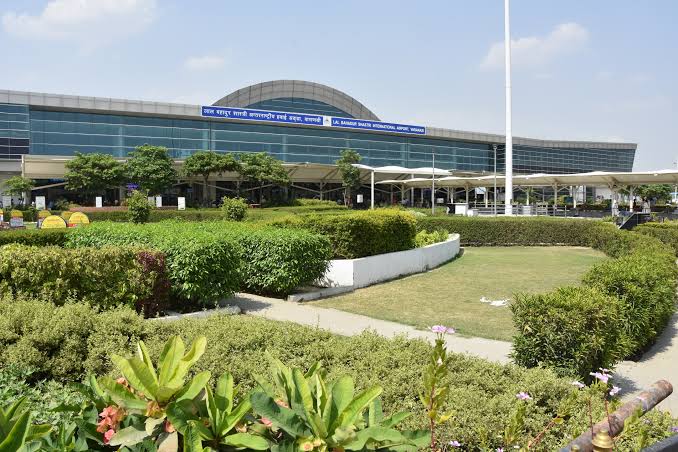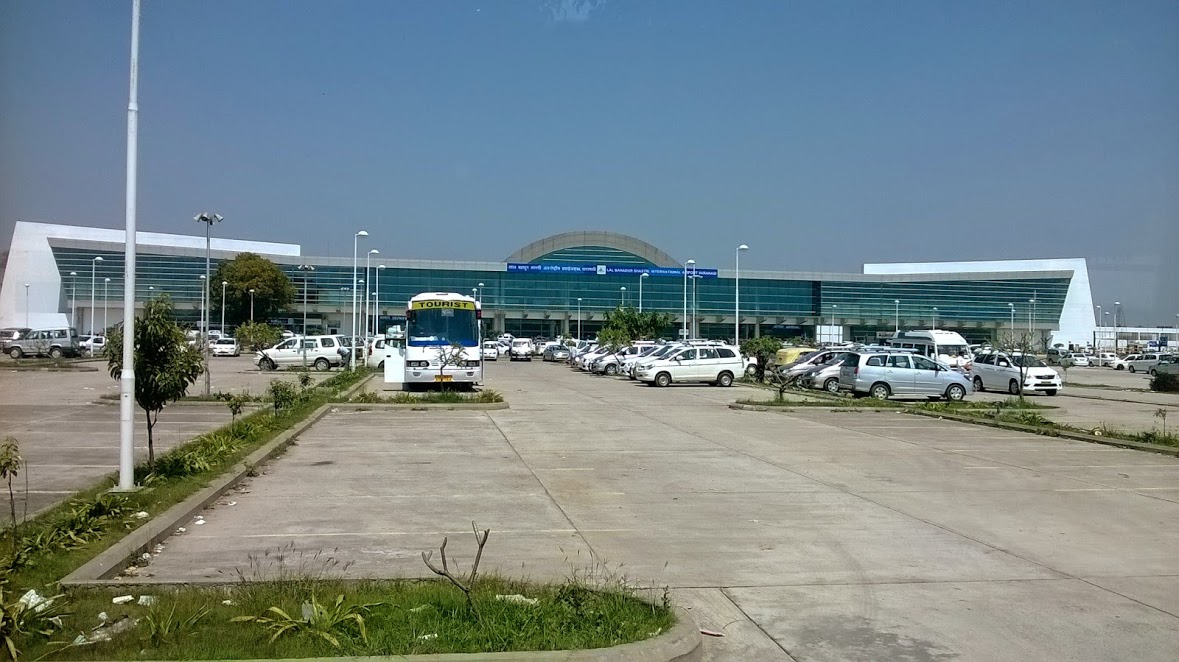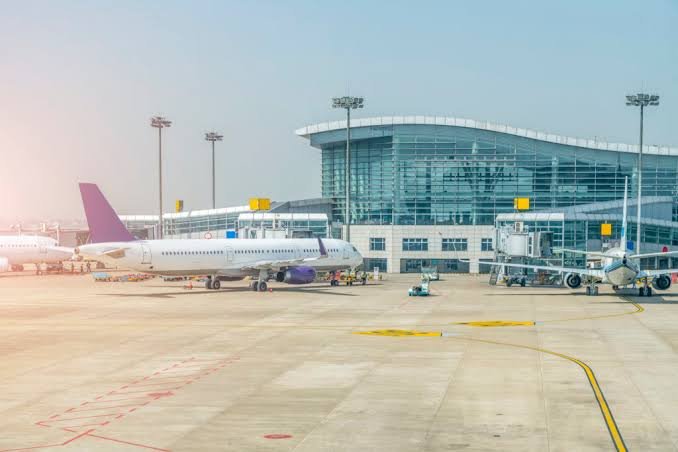Varanasi’s Lal Bahadur Shastri International Airport is the fourth airport in the world with a cutting-edge Self Baggage Drop (SBD) system. It speeds up check-in, lowering passenger wait times. This service, initially for three airlines, simplifies travel like nothing before.
Creating a Global Aviation Hub at Varanasi’s Babatpur Airport
Varanasi, one of the world’s oldest cities and a spiritual center in India, is undergoing a technology upgrade at its Lal Bahadur Shastri International Airport, also known as Babatpur Airport. As part of its continued modernization efforts, the airport has become the world’s fourth and India’s third to install a Self Baggage Drop (SBD) system. This method will streamline travel, reduce check-in delays, and improve passenger experience. 
In this extensive tutorial, we will look into the new Self Baggage Drop system at Babatpur Airport, how it works, its advantages for travelers, the global significance of this update, and its contribution to Varanasi’s increasing image as a key international travel hub.
The Self Baggage Drop System: Varanasi’s New Step
The Self Baggage Drop system established at Varanasi’s Babatpur Airport marks a key milestone in India’s aviation sector. It aligns the airport with worldwide standards by offering cutting-edge technology that automates the baggage handling operation. Traditionally, passengers had to wait in huge queues at the check-in counter to drop off their baggage. This manual process often took roughly 4-5 minutes each passenger, causing to severe delays during busy hours.
However, with the new SBD system, passengers can circumvent these waits. Instead of waiting for airline staff to tag and handle their luggage, travelers can now finish the process autonomously. Here’s how it works:
1. Check-in and Boarding Pass:
Upon arriving at the airport, guests can check in utilizing the Common Use Self Service (CUSS) kiosks. These kiosks allow passengers to print their boarding cards and bag tags without assistance.
2. Tagging the Luggage: After getting their baggage tags, passengers must attach them to their luggage. This method ensures that the system can automatically recognize and handle each piece of baggage as it goes through the conveyor belts.
3. Scanning Boarding Pass and Baggage Drop:
Passengers next proceed to the Self Baggage Drop unit, where they scan their boarding pass and deposit their marked bags on the conveyor belt. The technology checks the information and automatically moves the luggage to the airplane’s cargo hold.
4. Time Efficiency and Ease:
The entire process at the SBD unit takes only a fraction of the time compared to standard check-in counters, saving significant minutes, especially for those in a rush.
This invention is presently available for clients flying via three major airlines: Air India, IndiGo, and Air India Express. These airlines constitute a considerable share of domestic and international traffic at Babatpur Airport, making the new system accessible to a huge number of travelers.
Why This System Matters: Time and Convenience
The launch of the Self Baggage Drop system is not just about technology but about improving passenger experience. In today’s fast-paced world, passengers value speed and efficiency, and Babatpur Airport is responding to this requirement. Some of the primary benefits include:
1. Time Savings: For frequent flyers and business travelers, every minute matters. The SBD system dramatically lowers the time spent in lineups, letting travelers to proceed through check-in and baggage drop processes more swiftly.
2. Reduced Crowds and Congestion:
One of the primary issues at airports is regulating the flow of people during busy hours. By adding self-service kiosks and luggage drop systems, Babatpur Airport can ease congestion at check-in counters, especially during high travel periods like holidays and weekends.
3. Enhanced Passenger Experience: For customers flying with limited luggage, the shortened SBD process makes the airport experience smoother and less unpleasant. The system’s simplicity and ease of use help travelers, particularly those unfamiliar with traditional check-in protocols, to navigate the airport independently.
4. Improved Efficiency for Airlines:
Airlines also benefit from the Self Baggage Drop technology. With automated baggage handling, airline staff may focus on other essential operational aspects, boosting overall service quality and enhancing flight schedules.
Babatpur Airport’s Place on the Global Stage: The World’s Fourth Airport with SBD Technology
While many airports throughout the world are gradually implementing self-service technologies, Babatpur Airport’s achievement is particularly significant. As the world’s fourth airport to deploy the Self Baggage Drop system, it enters the ranks of other leading international airports, increasing its global prestige. 
The relevance of this invention extends beyond the technological leap. Varanasi, historically known for its spiritual legacy, is today being acknowledged for its modernizing efforts. By modernizing its airport facilities, the city is establishing itself as a more appealing destination for international passengers. The existence of world-class infrastructure also makes Varanasi a key hub for tourism, trade, and business.
The other airports that have implemented comparable systems include Delhi and Mumbai, two of India’s busiest and most advanced airports. Varanasi’s Babatpur Airport entering this elite group shows its growing relevance in India’s aviation scene.
The Role of DG Yatra and Digitalization in Indian Aviation
The Self Baggage Drop technology is intimately tied to India’s bigger digitalization drive, particularly the DG Yatra program. DG Yatra is an initiative undertaken by the Indian government aimed at delivering a smooth, paperless, and contactless travel experience for passengers. Through this service, passengers can enjoy an entirely digital airport experience, from check-in to boarding.
For tourists at Babatpur Airport, the SBD system combines with DG Yatra’s capabilities. Upon entering the airport, passengers using the DG Yatra app can proceed directly to the Self Baggage Drop unit. After inputting their PNR (Passenger Name Record) number, passengers can dump their luggage, print tags, and head directly to the security check area.
The DG Yatra program’s influence on the Self Baggage Drop system underscores India’s dedication to transforming the aviation sector. By merging digital technology with automation, Babatpur Airport is taking a huge step toward a fully digital travel experience, helping millions of travelers annually.
Varanasi’s Babatpur Airport: A Growing Aviation Hub
The deployment of the Self Baggage Drop system is part of a bigger initiative to upgrade Babatpur Airport’s infrastructure and services. Varanasi, being a prominent cultural and spiritual attraction, attracts both local and international travelers. The airport’s upgrading is critical to accommodating this expanding volume of travelers.
In recent years, Babatpur Airport has seen tremendous expansion in passenger traffic. From servicing a few thousand passengers annually to presently serving millions, the airport has witnessed remarkable development. The introduction of the Self Baggage Drop system is just one of many modifications aimed at enhancing the overall efficiency and capacity of the airport.
Other developments at Babatpur Airport include:
– Expansion of Terminals:
To manage the increased number of passengers, the airport has enlarged its terminals, adding more check-in counters, security lanes, and waiting spaces.
– Introduction of International Flights:
Babatpur Airport now offers direct international flights to several significant locations, making it a gateway to Uttar Pradesh for foreign travelers.
– Cargo Handling Facilities:
Alongside passenger services, the airport has strengthened its cargo handling capabilities, contributing to the region’s economy by promoting trade and commerce.
Impact on Varanasi’s Economy and Tourism
Varanasi’s economy stands to benefit considerably from the upgrading of Babatpur Airport. By upgrading the airport’s infrastructure, the city is better poised to attract tourists, business travelers, and pilgrims from throughout the globe. Varanasi, frequently referred to as the “spiritual capital of India,” draws millions of people each year. With upgraded airport facilities, the city can provide a smoother, more efficient travel experience.
Additionally, the Self Baggage Drop system’s time-saving capabilities enable guests to spend more time experiencing the city’s various attractions, such as the Kashi Vishwanath Temple, Ganga Aarti, and the historic ghats. Business travelers also stand to win, as the improved airport promotes faster transit, enabling them to focus on their business without the bother of extended wait periods.
Conclusion: A New Era for Babatpur Airport
The introduction of the Self Baggage Drop system at Varanasi’s Babatpur Airport signals a new era in Indian aviation. By becoming the world’s fourth airport to provide this innovative technology, Babatpur Airport is setting a new standard for convenience, efficiency, and passenger happiness. 
This expansion not only increases the airport’s global position but also represents the city of Varanasi’s commitment to modernization while preserving its unique cultural legacy. As the airport continues to grow and evolve, it will surely play a vital role in enhancing Varanasi’s economy, tourism, and international connectivity. The Self Baggage Drop system is just the beginning, as Babatpur Airport continues its march toward becoming a world-class aviation hub.







